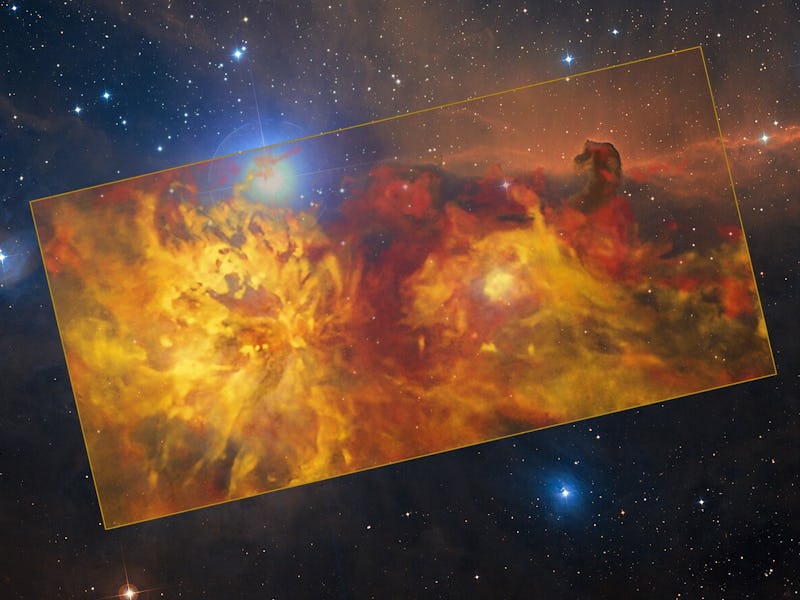Look: The heart of a famous constellation is on fire
The Flame Nebula glows with ultraviolet light.

A fire is burning at the heart of one of the most beloved constellations.
Well, maybe not a real fire. But a recent image of the Orion Constellation captures one of its most glorious nebulae, the Flame Nebula. The nebula appears to be ignited in raging flames burning at the very fabric of the cosmos as it shines bright amid the closest molecular cloud to the Sun.
The European Southern Observatory (ESO) released the image Tuesday, offering a unique glimpse at this busy constellation.
The iconic Flame Nebula burns bright in this recent picture of the familiar Orion Constellation.
The breathtaking image shows the Flame Nebula as the largest portion on the left half of the central rectangle.
Nebulae are gigantic clouds of gas and dust. Some nebulae were created from the aftermath of a dying star, while others act as a nursery for baby stars being born into the universe.
The Flame Nebula contains a cluster of young stars at its center that emit high-energy radiation, making the surrounding gases shine. The bright star Alnitak, located in the Belt of Orion, shines energetic ultraviolet light into the nebula itself, which causes electrons to move away from its clouds of hydrogen gas. The nebula’s distinct glow results from the electrons and ionized hydrogen recombining.
The different colors of the image indicate the velocity of the nebula’s gas. The Flame Nebula and its surroundings are moving away from our perspective on Earth, with the red clouds in the background receding faster than the yellow ones in the foreground.
Meanwhile, the image of a smaller reflection nebula named NGC 2023 is on the right. The famous Horsehead Nebula can also be seen in this image, towards the top right of NGC 2023. All three nebulae are part of the Orion cloud, a giant gas structure located around 1300 to 1600 light-years away from Earth.
ESO’s Atacama Pathfinder Experiment (APEX), located on the top of the Chajnantor Plateau in Chile’s Atacama Desert, captured the image. APEX had just gotten a shiny new camera that a team of astronomers wanted to test out.
“As astronomers like to say, whenever there is a new telescope or instrument around, observe Orion: there will always be something new and interesting to discover!” Thomas Stanke, an astronomer at ESO, said in a statement.
Using the newly installed SuperCam, the astronomers pointed the telescope at the constellation and observed it over several years.
The Orion Molecular Cloud Complex features these iconic nebulae, as well as the most active star-forming region within the relative area surrounding the Solar System. Through their observations, the team also discovered a new nebula. The smaller nebula is almost perfectly circular and was named the Cow Nebula.
This article was originally published on